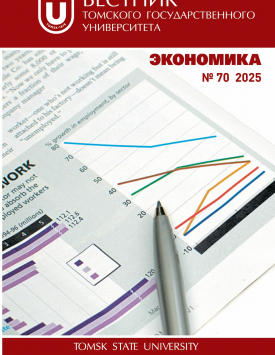Public transport as a driver of quality of life
This article examines the interdependencies between the quality of life of the population and the organization of public transport. The main attention was paid to the role of efficient public transport in reducing environmental pollution, overcoming social inequality and ensuring social justice, and the issue of increasing the economic efficiency of urban areas was also considered. Based on theoretical and applied research, the current state of public transport in Russia was analyzed, key problems were identified and specific measures to solve them were proposed. The aim of this study is to assess the impact of public transport on the quality of life of the population, identify its advantages and develop recommendations for improving the functioning of the transport system. To achieve this aim, comparative analysis and statistical modeling methods were used to assess current indicators and predict possible changes when implementing the proposed measures. The research shows that the share of emissions in the total volume of carbon dioxide (CO2) emissions in Russia, including public transport, reaches 14.6%, including those produced by public transport. This indicator is significant and has a global impact on the ecology of populated areas. The article also provides examples of studies that give an unambiguous assessment of the consequences of the transition of public transport to electric traction, for example, a study by the European Commission estimates such a benefit through a 40% reduction in mortality from diseases caused by air pollution, and a reduction in health care costs by 20 billion euros annually; in addition to this, the development of public transport contributes to a significant reduction in greenhouse gas emissions, improves air quality and rationally uses natural resources. Public transport helps to overcome social inequality, providing equal access to basic social benefits for all segments of the population, including the elderly, students and low-income families. Research conducted in the United States proved the impact of a developed public transport system in poor areas helps to reduce unemployment among low-income groups by 15-20%. The economic effect is expressed in increased population mobility, increased business activity and reduced transport costs. A study conducted in London proved that an increase in the frequency of public transport by 10% led to an increase in the turnover of local businesses by 1.5-2%. Similar results were obtained in a study conducted in New York, which noted that areas with good transport accessibility attract more entrepreneurs and tourists. The findings prove the need for further investment in the development of public transport, since 53% of the Russian population uses public transport, and the majority of them are elderly people and high school students, who account for almost 60% of all passengers. The measures proposed in the study are aimed at increasing the environmental class of rolling stock, improving the quality of transport services and introducing digital technologies, which will create more comfortable and accessible cities of the future, to improve the environmental situation, increase social justice and economi c well-being. The authors declare no conflicts of interests.
Keywords
quality of life, social inequality, public transport, environmental sustainability of the territory, social justiceAuthors
| Name | Organization | |
| German Maria V. | Tomsk State University | german_maria@mail.ru |
| Krakovetskaya Inna V. | Tomsk State University | inna_krakov@mail.ru |
| Nazarov Vyacheslav A. | Tomsk State University | nv@indor.ru |
References

Public transport as a driver of quality of life | Vestnik Tomskogo gosudarstvennogo universiteta. Ekonomika – Tomsk State University Journal of Economics. 2025. № 70. DOI: 10.17223/19988648/70/19
